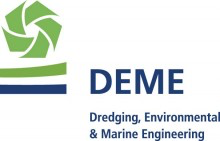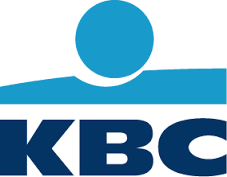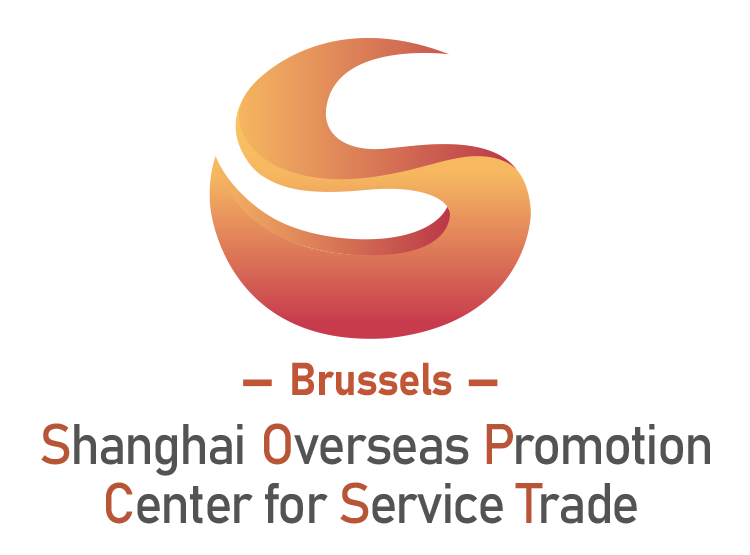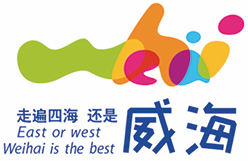Webinar: “China’s 14th Five-Year Plan and what it means for EU businesses” – 29 April 2021
May 4, 2021 Category ![]() Past events, Weekly
Past events, Weekly
The Flanders-China Chamber of Commerce organized a webinar on ‘China’s 14th Five-Year Plan and what it means for EU businesses’ on 29 April 2021.
Ms Gwenn Sonck, Executive Director of the Flanders-China Chamber of Commerce, welcomed the participants, and introduced the speaker, Mrs. Iris Pang, Chief Economist, Greater China, ING Bank. She joined ING in 2017 and is often interviewed by the media. Before joining ING she held a similar position at Natixis and OCBC Wing Hang Bank. She holds a PhD in Economics from the Hong Kong University of Science & Technology, a Masters in Commerce from the University of Oakland and a Bachelor in Economics from the University of New South Wales. Mrs. Pang will share her insights on the impact of the 14th Five-Year Plan on China’s economy and the likely consequences for China’s relationship with Europe. In 2020, China became the EU’s biggest trading partner overtaking the U.S. Foreign investment in China has increased by 6.3%. China overtook the U.S., regaining the title of the world’s top destination for FDI and will also be one of the main drivers of the world’s growth this year. More business opportunities will also arise after ratification of the Comprehensive Agreement on Investment. It is the most ambitious agreement that China has ever concluded. It will offer broader market access and a better business environment for investors in Europe and in China. European companies active in manufacturing will see new business opportunities. There will also be more opening up in the services sector.
Mrs. Iris Pang, speaking from Hong Kong, said that the 14th Five-Year Plan can be summarized in three important points:
Technology means that China addresses the threat of not having enough technology imports from the U.S. and its allies. They need to build their own self-reliant technology, which does not mean the top-notch technology, but more advanced than can be done at the moment, which is a normal ordinary level by world standards. They know they are lagging behind and can’t import all the technology they need so they have to be self-reliant, which is not easy for China because they need to import talent as growing their own talent takes time. They also need raw materials. A few months ago imports of silicon increased multiple times month-on-month. Silicon is used in the production of chips and needs a lot of imports. Selling technology is also difficult as foreign companies that have a footprint in the U.S. cannot sell technology to Chinese companies on the U.S. list for export control. China is facing difficulties to sell its technology to the world.
Green: The target to reach the carbon peak by 2030 and become carbon neutral by 2060 means China needs a lot of green products and technology. China is not very late in developing green equipment. It has quite advanced water and solid waste management systems, for example to recycle masks and PPE uniforms. “Green” can hopefully become a window between China and Europe and the U.S. Also in the green sector China needs technology which also depends on globalization and cooperation with the rest of the world. There are a lot of opportunities as many sectors are included in “green”. Europe can help China become greener.
The widening wealth gap is also addressed in the 14th Five-Year Plan. The wealthy class has benefited from Covid. They have resources and cash to increase their investments and therefore the wealth gap has increased. One way to reduce it is to enhance the healthcare system. Migrants are going to be able to enjoy health care services in cities, which in the past they could not due to the household registration system. There will be opportunities for European companies in the upgrading of public hospitals and there will be a breakthrough in education.
The government announced economic targets in the work report at the two sessions. The GDP growth target is set above 6% but the range is now between 8% and 10% because of the low base effect from 2020. China is really energetic in terms of growth. The country is scaling back fiscal stimulants because it has generally recovered from Covid-19. Compared to 2020, China does not need a very big fiscal stimulus in 2021. The 14th FYP shows a slowing down from the 13th one. The Chinese government is not looking for very fast growth, nor a lot of stimulus and relaxation for the coming five years. The focus is more on tackling challenges. The surveyed urban jobless rate will be 5.5% with 11 million jobs added. Keep in mind that every year 7 million students graduate, so the remaining 4 million is not much. Migrant workers’ wages are still growing but they experience it as a wage cut as it is lower than the 8% to 12% it used to be. An expected increase of 5% is not particularly attractive for migrant workers. We don’t need to worry about inflation in China. There will be tax reductions and an increase in R&D expenses by the government of 10.6%. There are many anti-monopoly regulations on fintech. The government doesn’t want to kill them but wants to show the world that it is on the same level with global regulations.
The relationship between China and the U.S. has worsened. It is wrong to assume that this has nothing to do with Europe. Following the Alaska meeting between China and the U.S., the EU imposed sanctions on China and China reacted with its own sanctions on the EU, which means the China-U.S. meeting had a political impact beyond the two economies. The EU is standing by the U.S. to fight on some China issues. Doing business with China, you need to be careful not to step on China or the U.S.
The China-EU Comprehensive Agreement on Investment (CAI) is not yet in effect. Many people celebrated when Merkel and Xi signed off on the agreement, but it has to be passed by every EU country and by the European Parliament. This will not happen this year, maybe next year, but it remains uncertain. China overtook the U.S. in 2020 as the EU’s biggest trading partner. The U.S. international trade dropped 10% in 2020, but trade with China increased 4.5%, while China’s exports to the EU increased 5.6% and China’s imports from the EU 2.2%. Both sides did more trade with each other even during Covid, because of medical equipment and supplies.
China is a big market but there are risks too. If you are doing business with China you need to be very careful, for example in speaking out about Xinjiang cotton. Think twice. Mrs Pang said that even being close to China, she didn’t know if there are labor camps in Xinjiang as she hasn’t visited for several years. But without information it is impossible to comment on it and it is best not to jump to conclusions. On the technology war it is difficult for Europe not to stand by the U.S. because many governments are worried about the growth of China’s economic and military power. Make sure you know the politics well before making a decision. In the coming five years you will face many difficult questions. You need to have somebody studying international politics consistently. Covid will continue to make international travel very difficult. Some European brands have started to sell their products on China’s online shopping platforms.
Volatility is the key theme for the yuan in 2021. The high-low range of the USD versus the yuan increased from 7% in 2019 to 9% in 2020 and there will be even more volatility this year with three terms of appreciation and depreciation expected. Be very careful if you open yuan positions and think about hedging because you may need it.
Which sectors are preferred in the China market? Promising sectors are 5G, infrastructure projects and big data centers. Domestic demand is a stable sector. Issues Mrs Pang warned about are anti-monopoly, the technology war and local government debt. Property developers are deleveraging but the Chinese government is not going to squeeze them to death. However, property developers have weak cash flows and need to divest a lot. The major assumption is that there will be no major comeback of Covid in China. The forecast for China’s real year-on-year GDP growth in 2021 is 8.6%. No changes in monetary policy are expected.
During the Q&A session, Jochum Haakma, Chairman of the EUCBA, asked how non-ratification of the CAI by all member countries would impact investment opportunities? Mrs Pang: You can’t rely on the international platform to grow your business. You have to rely on your own company.
Are rising housing prices part of inflation? Mrs Pang: No, asset inflation is always there in a growing economy. It is built in in emerging markets. Inflation does not come from investments, but from the real economic side, such as wage increases to retain your staff. The risks for China are the technology war and export demand. Wage growth and inflation will be limited this year.
Is there a plan about strategic research domains? Mrs Pang: The roadmap on technology innovation 2030 is available on this website: https://www.sciping.com/
If the CAI is ratified, will it be followed by a free trade agreement? Mrs Pang: This will probably take a long time. The FTA is even more difficult than the CAI. How can you talk about a trade agreement with a technology war going on, with export controls and sanctions?
Will non-Chinese companies be eligible for tax reductions for research-driven companies? Mrs Pang: Yes, if you have R&D projects in China, you can apply for tax reduction.
Could the technology war result in different standards? Mrs Pang: This idea comes from companies like Apple, Google and Huawei, and China having different operating systems. Almost all Chinese tech companies are private and they know the importance of the network effect. If more people use system A then it will be the system for the general public. Many companies want their system to be system A, but it won’t happen if they are not the biggest player. Ultimately there will be one or two operating systems that survive. China will not use this to limit imports, it actually wants to import more. They don’t mind if there system is system A, they want to buy and sell technology.
When is the RMB likely to become fully convertible? Mrs Pang: The RMB joining the IMF’s special drawing rights was the start of convertibility. It is now going through a very slow stage, but things are changing. China and Russia and other countries have more transactions in RMB. But if I am a European company, I would want China to use the euro so that they take the risk.
Does the 14th Five-Year Plan points to a more centralized approach or is there still a strong impact from the provinces? Mrs Pang: There are still locally-based policies, but the concept is driven by the central government. The green policy is dictated by the central government but each province will have its own set of policies approved by the central government. You will face a lot of different policies if you have factories in different locations.
- KURT VANDEPUTTE (UMICORE) APPOINTED CHAIRMAN OF THE BOARD OF THE FLANDERS-CHINA CHAMBER OF COMMERCE (FCCC)
- Webinar: “Knowing Your Chinese Partner” – May 26, 2021, 10 am – 12 am
- EMA starts rolling review of CoronaVac, WHO approves Sinopharm vaccine for emergency use
- The Global Times warns not to politicize the Comprehensive Agreement on Investment (CAI)
- Hainan to become biggest duty-free market in the world





























